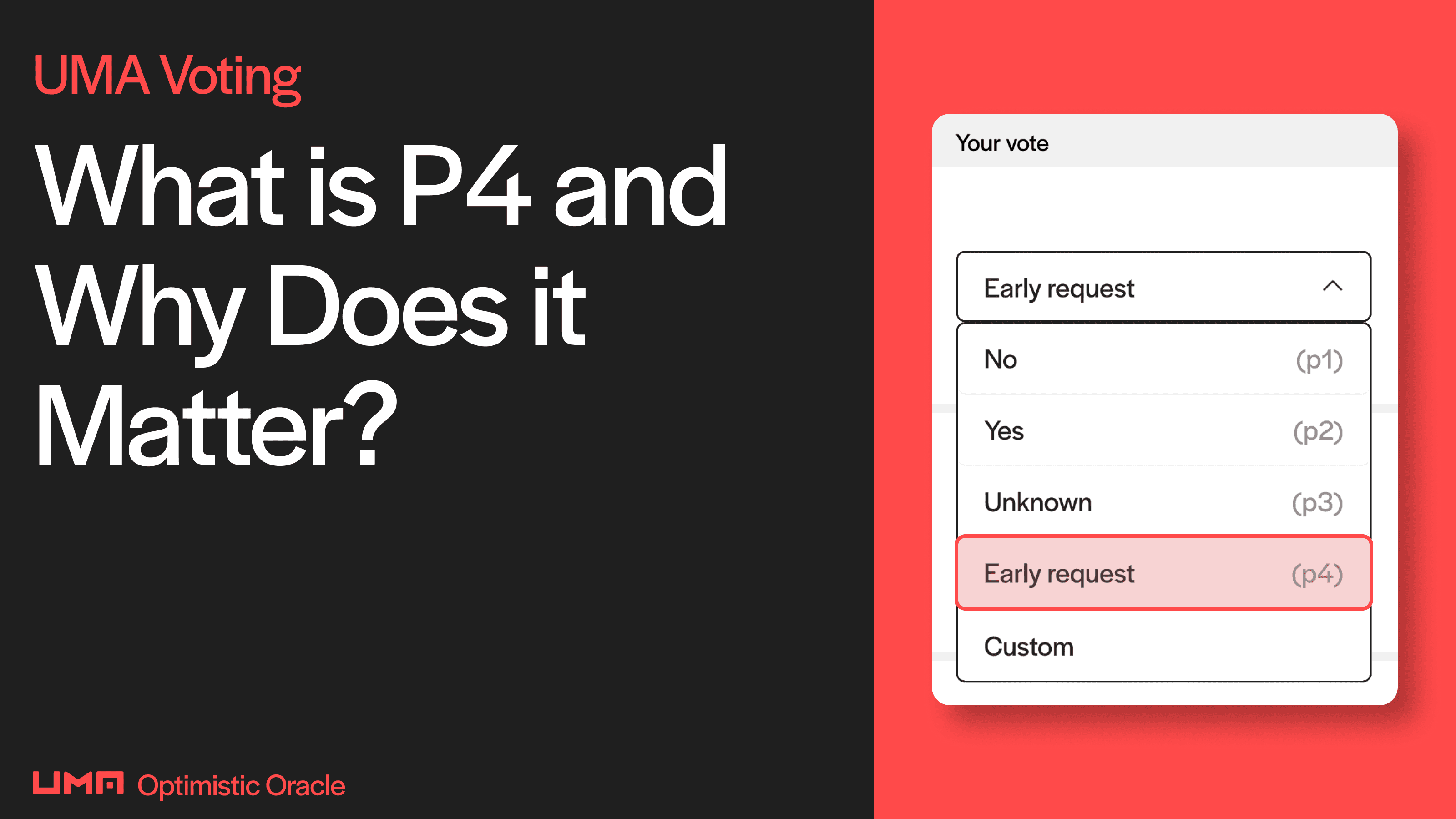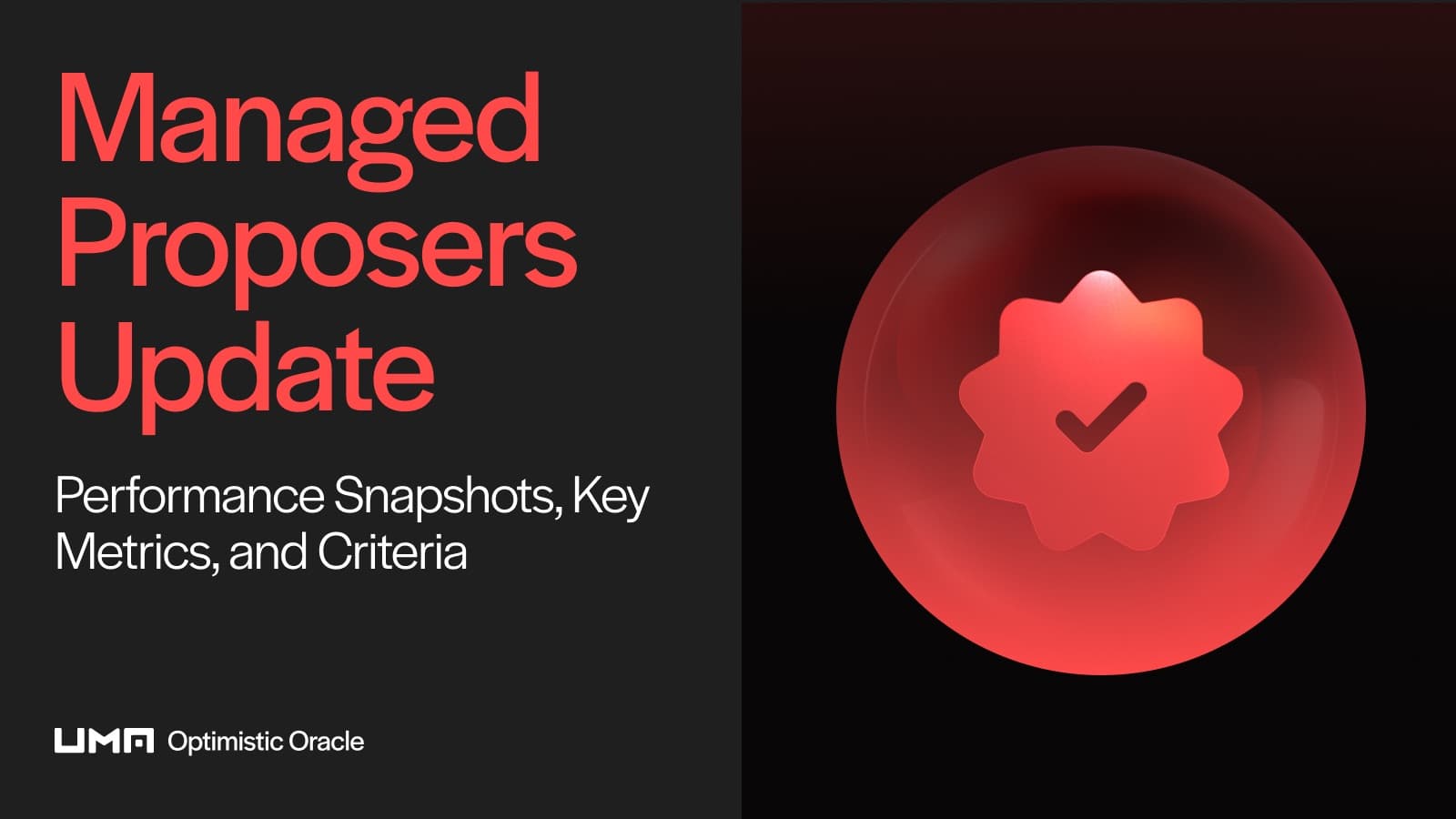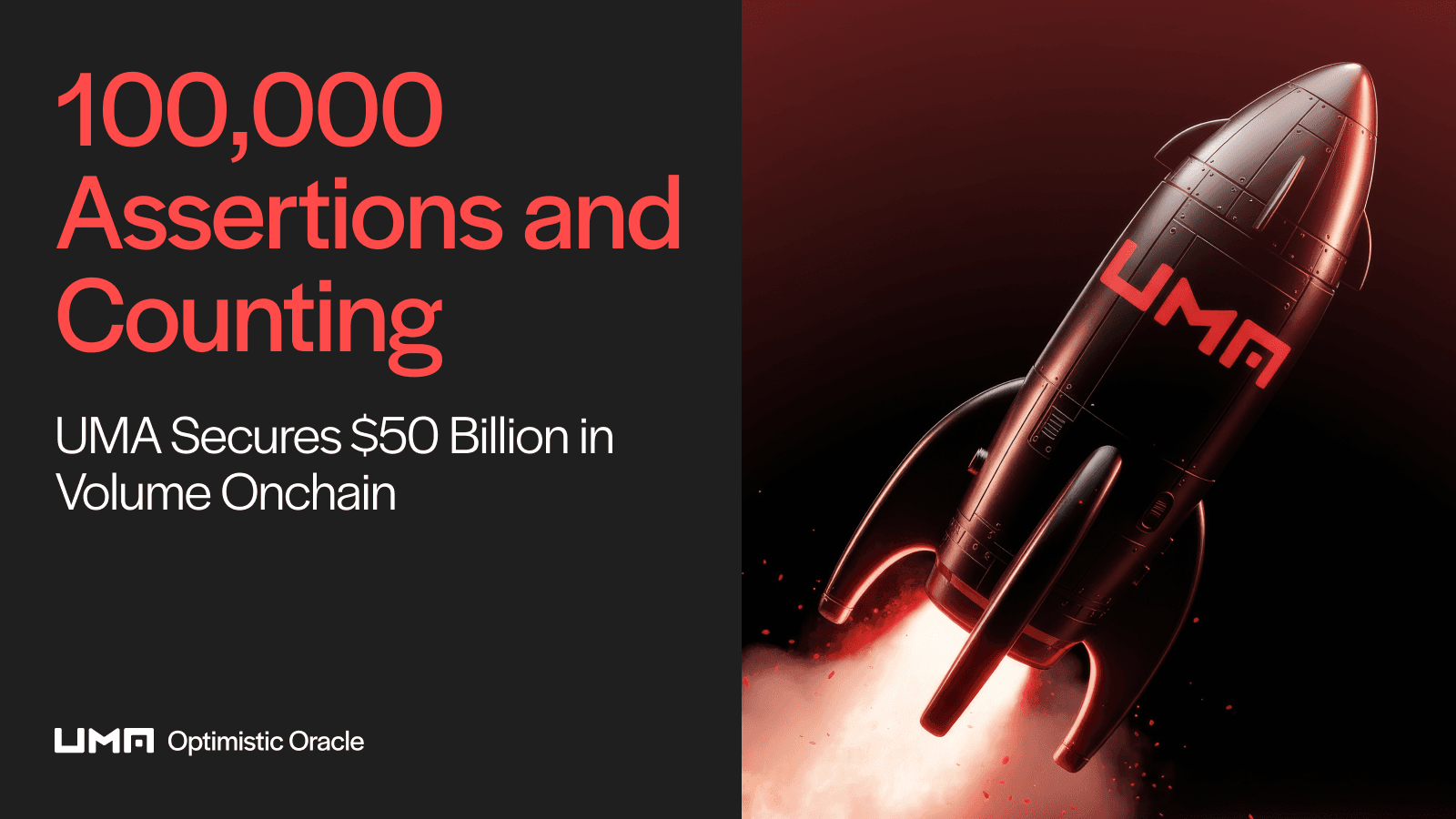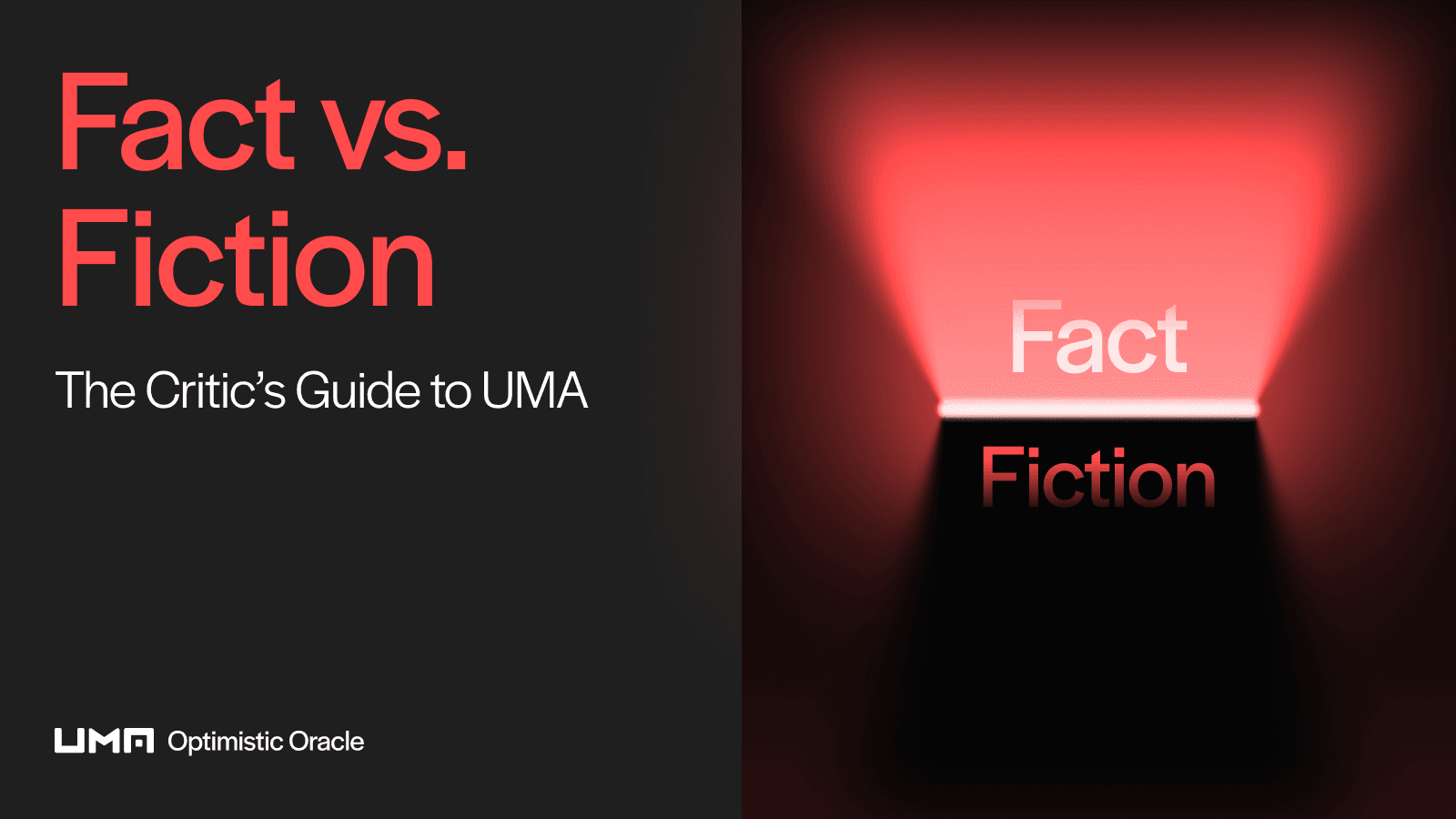UMA Voting: What is P4 and Why Does it Matter?
Introduction
Timing is everything—especially when data is submitted to UMA’s Optimistic Oracle (OO).
If data is submitted too early, it can have serious consequences. This is where the P4 (Early Request) voting option comes into play. Understanding P4 is crucial for ensuring accurate oracle resolutions, protecting your interests, and maintaining the integrity of the optimistic oracle. It also plays a significant role in prediction markets that rely on the OO for market settlement and dispute resolution.
Everyone involved in UMA's OO—and the prediction markets it settles—must understand P4 and its implications. Let’s break down what P4 means, how it works, and why you should care.
Quick Refresher: UMA’s Optimistic Oracle
UMA’s OO enables decentralized, verifiable data proposals. Here’s how it works:
Requesters (e.g., prediction markets) send data requests to the oracle. For example, when prediction markets send a request, it means the market is asking for an offchain piece of information to be resolved onchain—which UMA handles.
Proposers submit answers (data proposals) to specific requests made to the OO. They must submit a bond with their proposal to ensure economic security.
Disputers can challenge proposals they believe to be incorrect. They must also match the proposer’s bond. If a proposal is disputed, it is moved to UMA’s Data Verification Mechanism (DVM), where UMA voters determine the correct outcome (see below).
Verifiers (previously known as the “verification team”) validate proposals by submitting evidence to tickets. They are rewarded for correct verifications and penalized for false ones. If a verifier identifies a bad proposal, they can trigger a dispute alert to notify disputers and the UMA team. Learn more about verifiers here.
Voters are $UMA stakers who verify disputed proposals via decentralized, shielded votes, determining the correct outcome by consensus. Voters earn rewards for accurate voting and are penalized if they vote incorrectly or miss votes. Check out our voting guide and FAQ to learn more.
This decentralized system ensures data accuracy and incentivizes truthful participation. So, where does P4 come in?
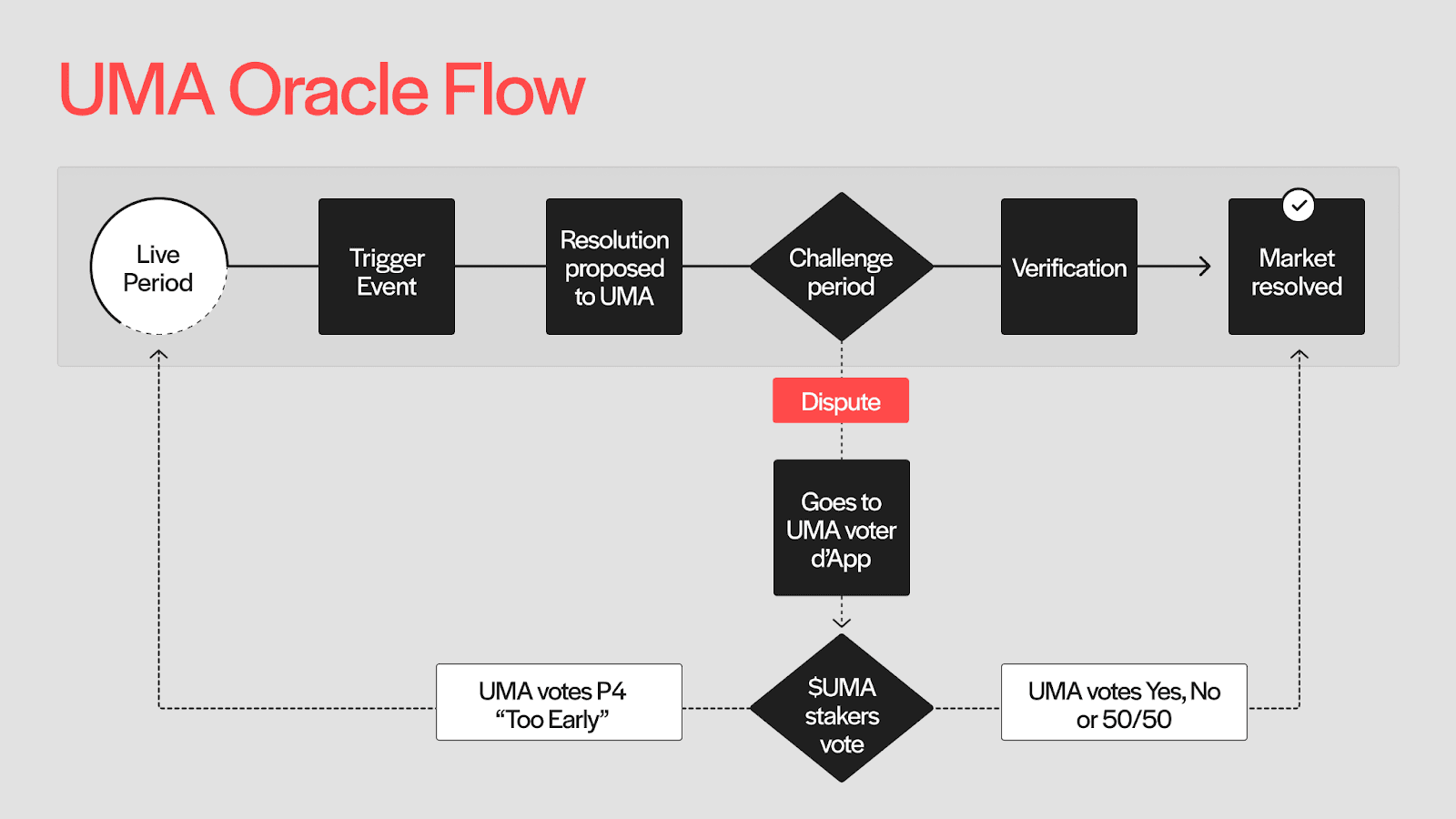
What is P4?
P4 is the voting position UMA voters take when a disputed proposal has been made too early, based on the time it was made—regardless of its accuracy at the time of voting.
When voting on disputes, voters typically have four main options:
P1 – No (or a specific outcome)
P2 – Yes (or an alternative specific outcome)
P3 – The answer is unknown or 50/50
P4 – The proposal was made too early
P4 applies when a proposal is made before it should have been.
For example, if a football game ends at 4:20 PM EST, any proposal about the winner submitted before 4:20 PM EST is considered too early. Even if a team is winning by 100 points with only 10 seconds remaining, proposals are not valid until the game has officially ended—regardless of how inevitable the outcome may seem or if it ends up happening.
Remember, if an event has not officially concluded and/or its predefined criteria have not been met at the time a proposal is submitted, the proposal is invalid.
Why P4 Matters
Timing is critical for proposal accuracy. The reliability of UMA’s OO depends on precise, well-timed data proposals, disputes, and votes.
Here’s why P4 matters to different participants:
Prediction market users: P4 prevents premature proposals from passing onchain, ensuring fairness and proposal integrity.
Proposers: Proposers must wait until the trigger event occurs before submitting. Proposers who submit too early lose their bond, even if their early proposal ends up being correct.
Disputers: Disputers can challenge premature proposals and earn a portion of the proposer’s bond.
Voters: Voters should always check proposal timestamps before voting. Voting incorrectly can lead to a slashed stake.
Remember, everyone involved in UMA's OO—and the prediction markets it settles—must understand P4 and its implications.
How to Avoid Submitting an Early Proposal
TL;DR: WAIT! (Seriously, just wait.)
As a proposer, avoid submitting proposals too early. Keep in mind that the purpose of proposing data is to report on an event that has already happened. Submitting proposals too early isn’t reporting—it’s predicting. This is why proposals must always be made in the past tense. If your proposal is disputed as premature, you will lose your bond.
To prevent this:
Check market rules—if you’re submitting a proposal for a prediction market, its rules will specify the trigger event or threshold.
Be patient—confirm that an event has officially ended or that a predefined threshold has been met before submitting your proposal.
Trust the rules, not strangers. There may be instances where predatory users attempt to persuade you to propose too early so that they can dispute it and earn a reward.
Remember—even if your proposal seems correct or inevitable, it will be invalid if submitted too early.
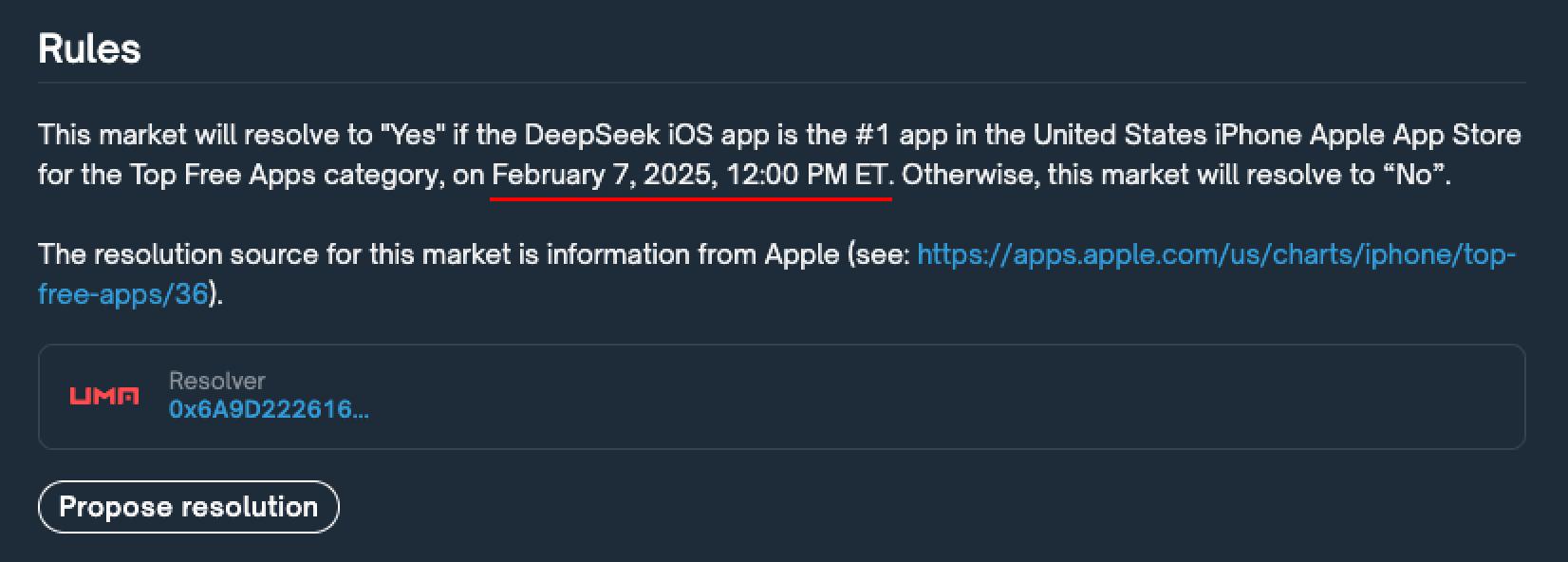
Note: Typically, a YES_OR_NO query market cannot resolve as “No” before the market expiry (e.g., February 7, 2025, at 12:00 PM ET as shown above).
However, there are exceptions, such as bracketed markets. For example, in a market like “How many times will Elon post today?”, once a specific threshold (e.g. 0-25 posts) has been exceeded without the possibility of reversal, that threshold option can resolve as “No”—regardless of the market’s expiry time.
Additionally, a YES_OR_NO query market can resolve to “Yes” before its deadline if its trigger event occurs. For example, in a market like “Will the price of ETH reach $3,000 this month?”, if the price of ETH hits $3,000, this market can resolve as “Yes” even if the month is not over yet.
When to Vote P4
As an UMA voter, always check the disputed proposal’s timestamp—especially when voting on prediction market disputes. If the timestamp is too early, the accurate and correct vote is P4: Too early.
For example, let’s say the proposal for the outcome of a basketball game is disputed. The proposal’s timestamp shows 10:03 pm EST. You find out that the game officially ended at 10:04 pm EST. This means the proposal was submitted too early, and you should vote P4.

Conclusion
Timing is crucial when determining the truth. UMA participants—proposers, disputers, verifiers, and voters—must pay close attention to proposal timestamps.
Reminder: Proposals submitted too early are always invalid. It’s important that proposers wait until an event has officially ended and its criteria have been met before submitting a proposal. Voters should always check the timestamp of disputed proposals in order to vote accurately.
To learn more about UMA voting, check out the resources below:
